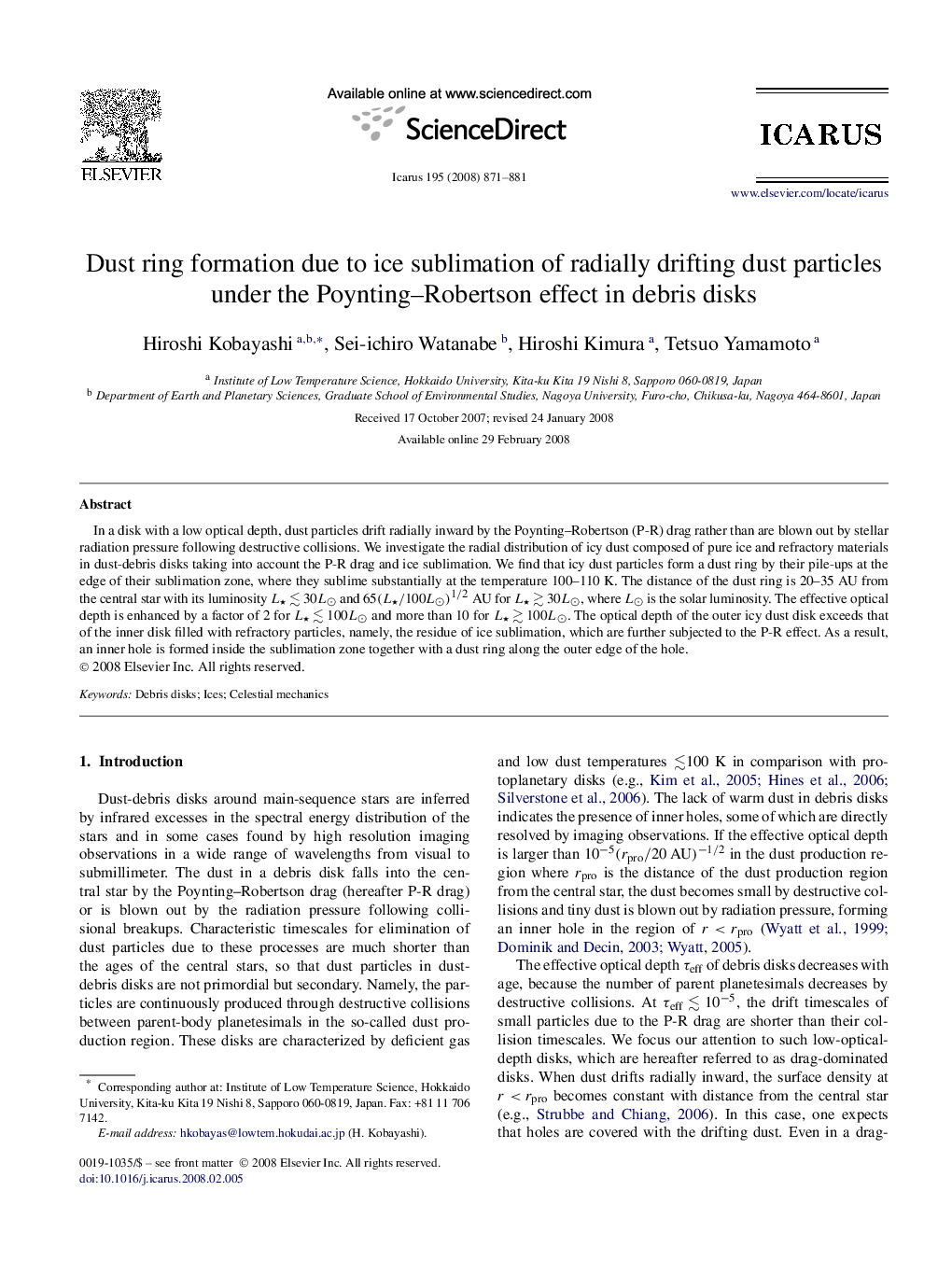| Article ID | Journal | Published Year | Pages | File Type |
|---|---|---|---|---|
| 1774980 | Icarus | 2008 | 11 Pages |
In a disk with a low optical depth, dust particles drift radially inward by the Poynting–Robertson (P-R) drag rather than are blown out by stellar radiation pressure following destructive collisions. We investigate the radial distribution of icy dust composed of pure ice and refractory materials in dust-debris disks taking into account the P-R drag and ice sublimation. We find that icy dust particles form a dust ring by their pile-ups at the edge of their sublimation zone, where they sublime substantially at the temperature 100–110 K. The distance of the dust ring is 20–35 AU from the central star with its luminosity L⋆≲30L⊙L⋆≲30L⊙ and 65(L⋆/100L⊙)1/2 AU65(L⋆/100L⊙)1/2 AU for L⋆≳30L⊙L⋆≳30L⊙, where L⊙L⊙ is the solar luminosity. The effective optical depth is enhanced by a factor of 2 for L⋆≲100L⊙L⋆≲100L⊙ and more than 10 for L⋆≳100L⊙L⋆≳100L⊙. The optical depth of the outer icy dust disk exceeds that of the inner disk filled with refractory particles, namely, the residue of ice sublimation, which are further subjected to the P-R effect. As a result, an inner hole is formed inside the sublimation zone together with a dust ring along the outer edge of the hole.
